When it comes to successful food plots, weeds are without a doubt public enemy number one. Weeds compete with your desired plants for nutrients, water and sunlight, and if the wrong types of weeds are allowed to grow unchecked, they can completely wipe out a plot in short order. And no one likes to see their hard work and hard-earned money go to waste. In this article, we will look at ways to limit the presence of weeds, as well has how to control them — both mechanically and chemically — if and when they do become a problem.
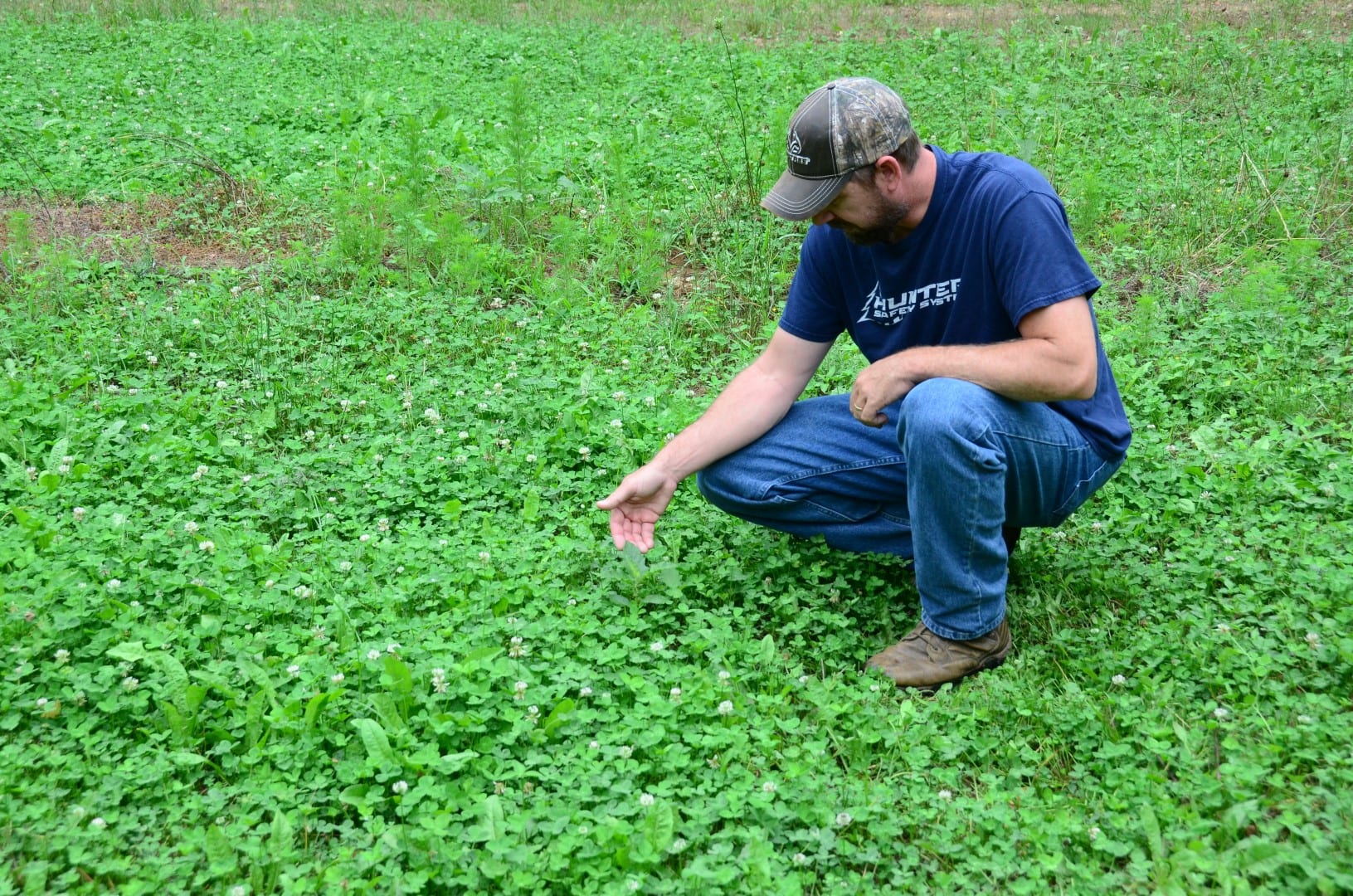
Managing weeds in your food plots takes a little effort and know-how. The information below will help you stay ahead of the game.
Planning for Weed Issues
The first step in controlling weeds in a food plot is to have a good understanding of what weeds you are most likely to encounter. You can get a good idea by simply identifying what is currently growing in the area where you plan to plant. You could also talk to someone at your local Natural Resources Conservation Service (NRCS) office to see what kinds of weeds local farmers most commonly encounter. Having this knowledge of local weeds can help you in deciding where and what to plant. For example, if you know a particular area on your property has a Johnson grass problem, then the easiest way to avoid having to control those weeds is to find a more favorable location for your plot. Of course, many of us don’t have the luxury of being able to pick and choose our plot locations.
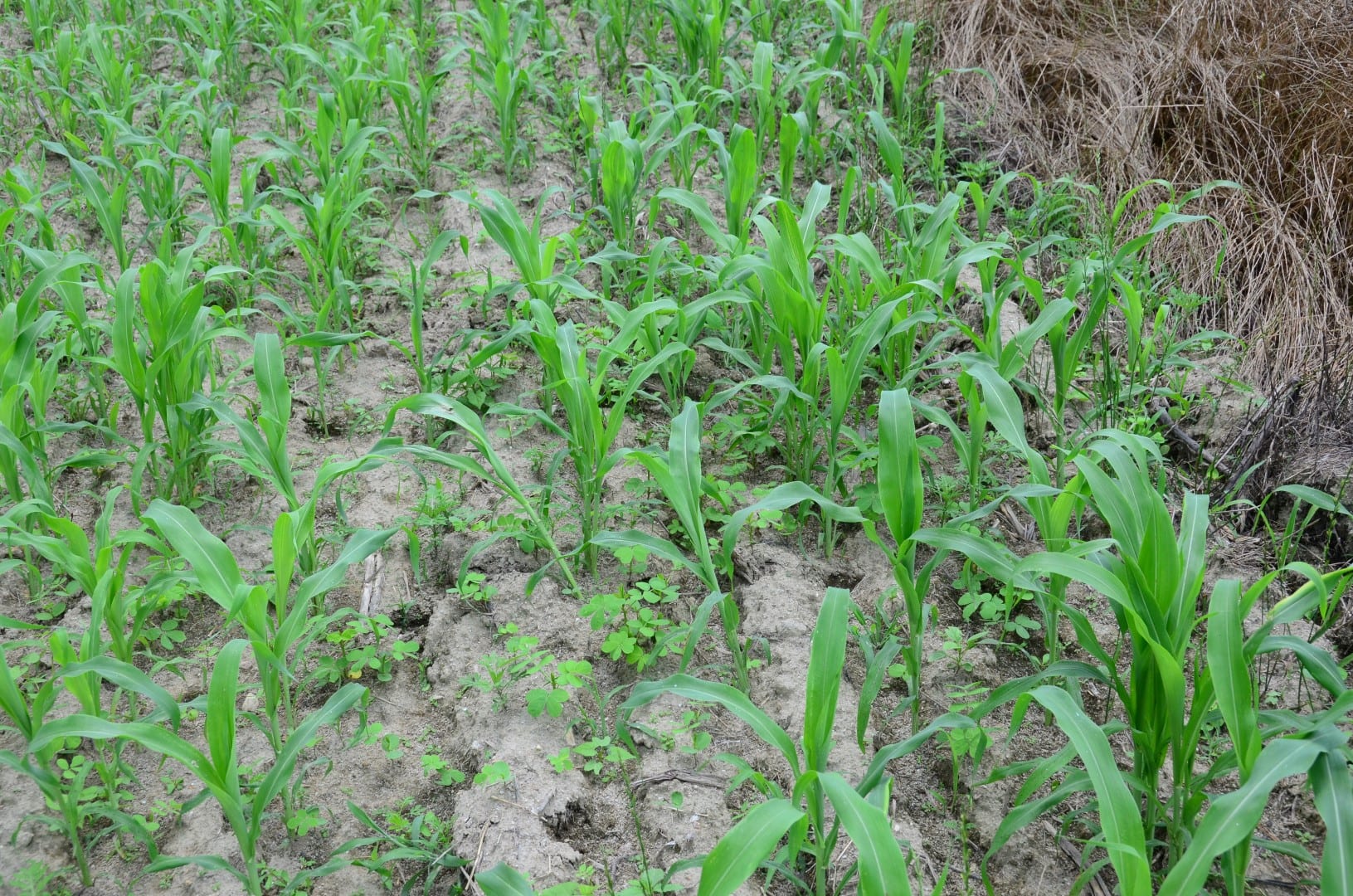
Broadleaf weeds are popping up in good supply in this food plot.
If you can’t avoid the weed problem, you can at least improve your odds of controlling the problem by choosing the right thing to plant. For example, If you know grasses are going to be your primary weed problem, consider planting a broadleaf food plot mix so you can use a grass-selective herbicide to deal with the problem. Conversely, if you know broadleaf weeds are going to be the problem, then plant a “grass” food plot — cereal grains like wheat, rye or oats, grain sorghum, corn, etc — for a season or two so you can use a broadleaf-selective herbicide.
Preventing Weed Issues
While it’s easy to get a visual of what weeds you are initially up against, what you can’t see is what lies beneath. Most weed problems start when you break ground with a disk or tiller and expose weed seeds that have been lying dormant beneath the soil’s surface. A great way to avoid exposing this unknown is by using a no-till method of planting. This method involves killing the existing vegetation with a broad spectrum herbicide like glyphosate (aka Roundup). After the vegetation dies back — which may take more than one herbicide treatment — your food plot seed is drilled into the ground using a no-till seed drill. Sounds easy enough, right? It is, but unfortunately most guys planting food plots don’t have access to a $12,000 no-till drill or the tractor needed to pull it. If you do have a capable tractor but no seed drill, check with your local NRCS office again, as they sometimes rent them for a reasonable fee.
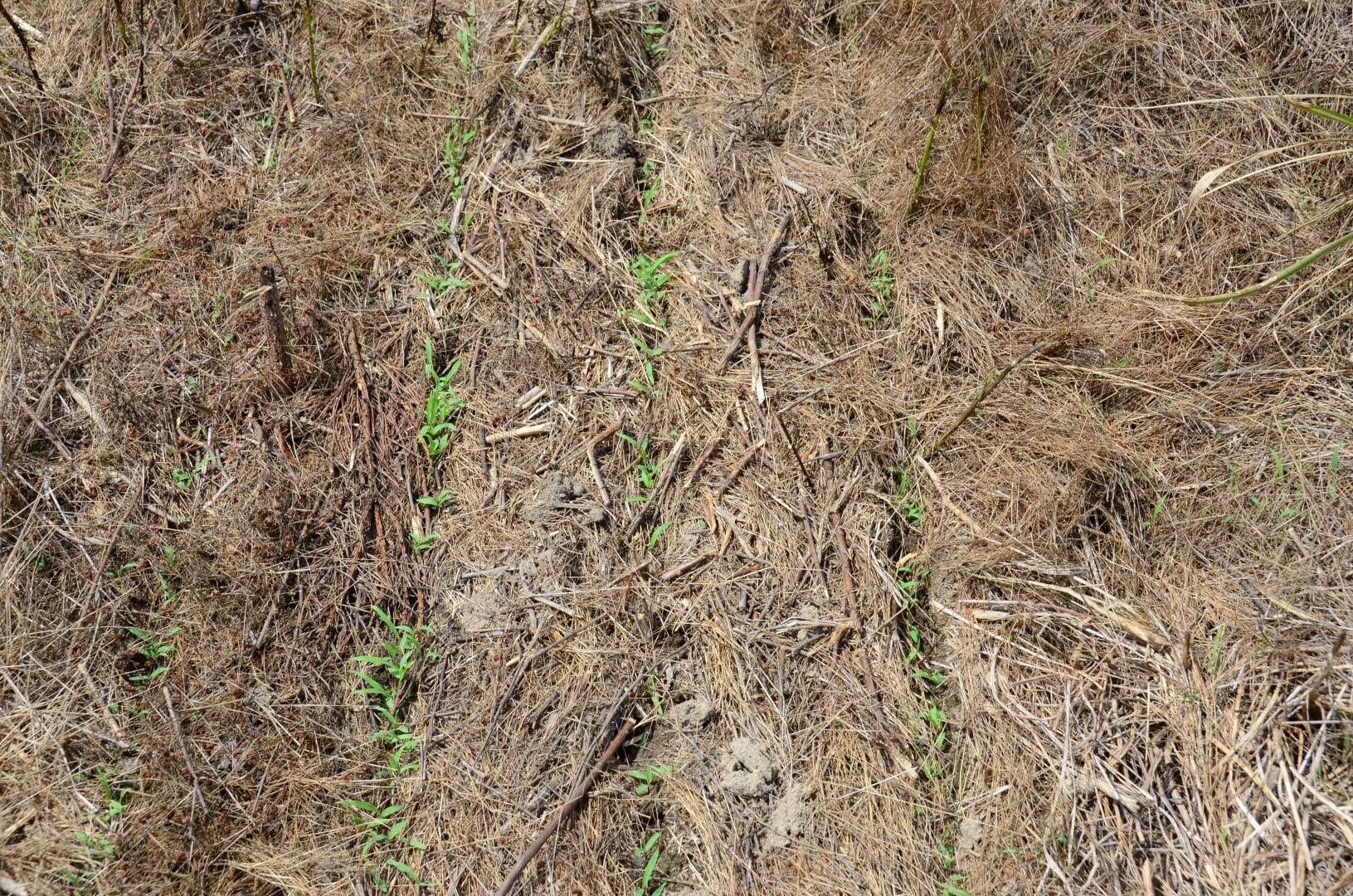
The no-till option is a great way to avoid excess weeds from the start.
If no-till planting is not an option, there are still steps you can take on the front end of a food plot planting to limit your weed problems once the plot is established. Start by breaking up the ground with a disk or tiller well before time to plant. Give the plot a few weeks to see what weeds germinate. If you don’t get a major flush of weeds or see any noxious weeds that may be hard to control later, you can spray the new growth with glyphosate and plant when the time is right. However, if you do get a major flush of weeds after the initial disking or tilling, repeat the process. Disk or till the plot as many times as you like, but you’ll want to finish the process by spraying any weeds that come up after the final disking prior to planting.
Most people who plant food plots understand the need for herbicides once their food plot is established and weeds become a problem. Many, however, don’t realize there are herbicides you can spray prior to planting, or after planting but prior to germination, that will prevent weeds from becoming a problem. These are commonly referred to as pre-emergent herbicides and they carry trade names like Prowl and Pursuit. Pre-emergent herbicides can be a great tool for establishing your food plot, but there are reasons you don’t hear about them for food plot use near as much as you do the common post-emergent herbicides. For one, pre-emergent herbicides tend to be much more expensive than the common post-emergent ones. And more importantly, pre-emergent herbicides stay active in the soil for varying lengths of time — from a matter of days to multiple years. This residual effect limits what you can plant in the field for a specific period of time. For example, if you are planting soybeans and use Pursuit as a pre-emergent, you can’t plant brassicas in that field for over three years! So be sure to carefully read the label of any herbicide you are considering and proceed with caution.
Controlling Weed Issues
Even if you choose a great location and prepare your seed bed carefully, weeds can still become an issue once your food plot is established. There is just no way to completely exhaust all the weed seeds in an area long term. It’s worth pointing out that having some native weeds in a food plot is not always an issue and in many cases doesn’t require control. Many native plants we consider weeds are actually excellent deer forage, so don’t worry about having a perfectly manicured food plot. However, when a scattering of weeds starts to take over a plot or if noxious weeds pop up, then it’s time to look at mechanical and/or chemical means of control.
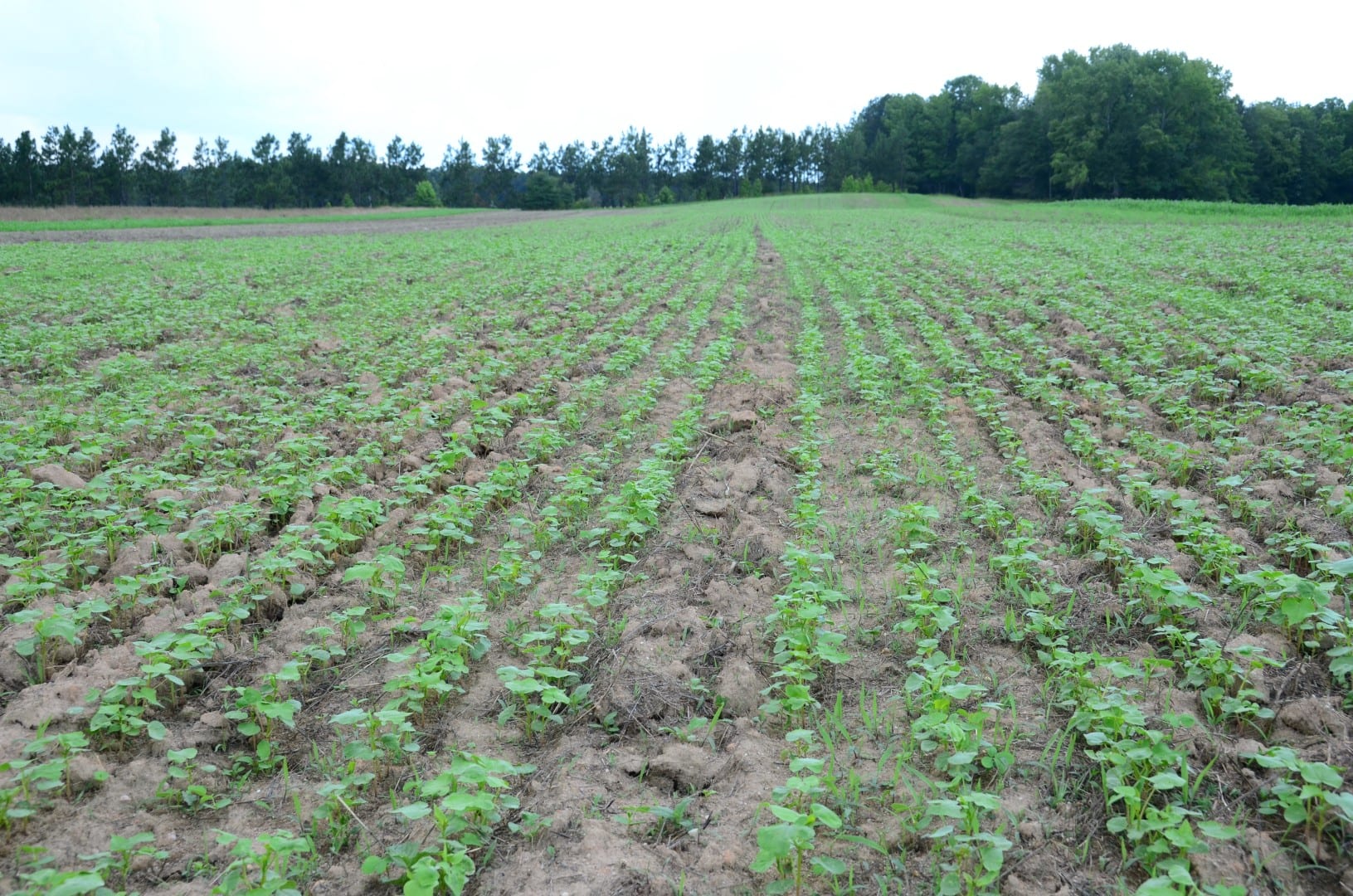
Grass invading a cowpea food plot.
If your food plot consists of perennial forages like clover or alfalfa, then some of your weed issues can be controlled with mowing. Mowing will set back weeds — particularly annual broadleaf weeds — long enough to give your food plot species the edge to grow and outcompete the weeds. When timed correctly, it will also prevent those weeds from producing a seed head and creating future weed problems. Unfortunately, if your food plot consists of annual species like soybeans, corn, peas or brassicas, then mowing is not really an option, as you would do more harm than good to the food plot itself.
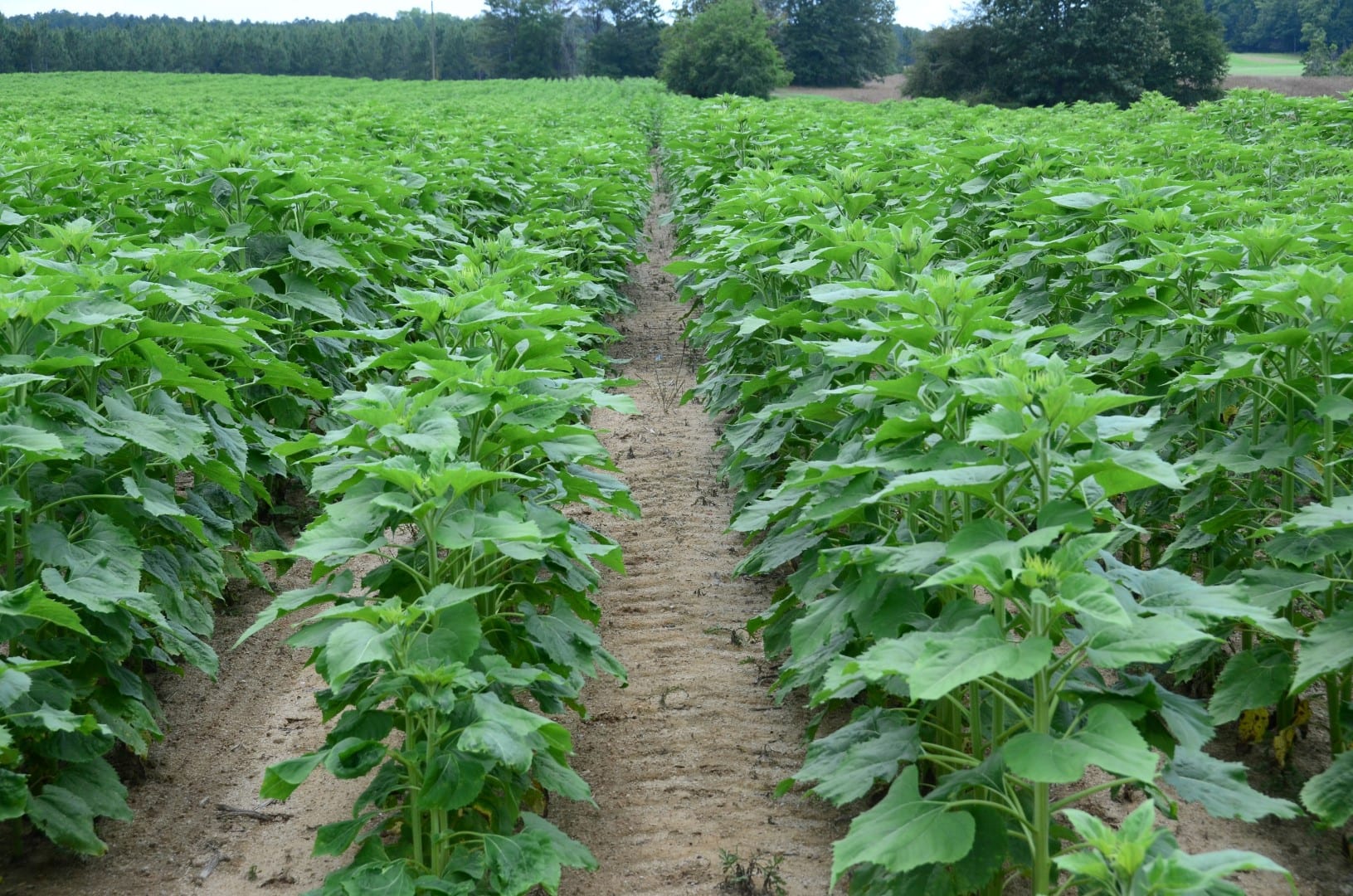
Weed control done right.
When mowing isn’t an option, it’s time to consider post-emergent herbicides. These are the same herbicides many of you are familiar with, such as glyphosate (aka Roundup), clethodim (Select, Arrow), sethoxydim (Poast, Arrest), 2,4-D, and 2,4-DB (Butyrac) to name a few. It is beyond the scope of this article to cover exactly what herbicides you should use for every situation, but I will quickly touch on common options for the most common weed issue scenarios.
- When you need to kill everything in the field, glyphosate will be your go-to herbicide. If the field contains a lot of hard-to-control broadleaf weeds, then you may want to tank mix the glyphosate with 2,4-D.
- If you have grass weeds in a broadleaf food plot, you will want to use a grass-selective herbicide like clethodim or sethoxydim. Both work in similar manners, so you can base your decision on what is available locally at the best price.
- If you have broadleaf weeds in a grass food plot, you will want to use a broadleaf-selective herbicide like 2,4-D.
- If you have broadleaf weeds in a clover or alfalfa plot, then you can use 2,4-DB (Butyrac) which kills broadleaf weeds with the exception of clover and alfalfa. Keep in mind when using post-emergent herbicides that to be effective you MUST spray the weeds while they are actively growing and no more than eight to ten inches tall. If you wait until the weeds are knee high, you are too late — your herbicide application will not be near as effective. Also, when using a herbicide, always follow the label’s instructions regarding mixing and spraying rates as well as the safety precautions.
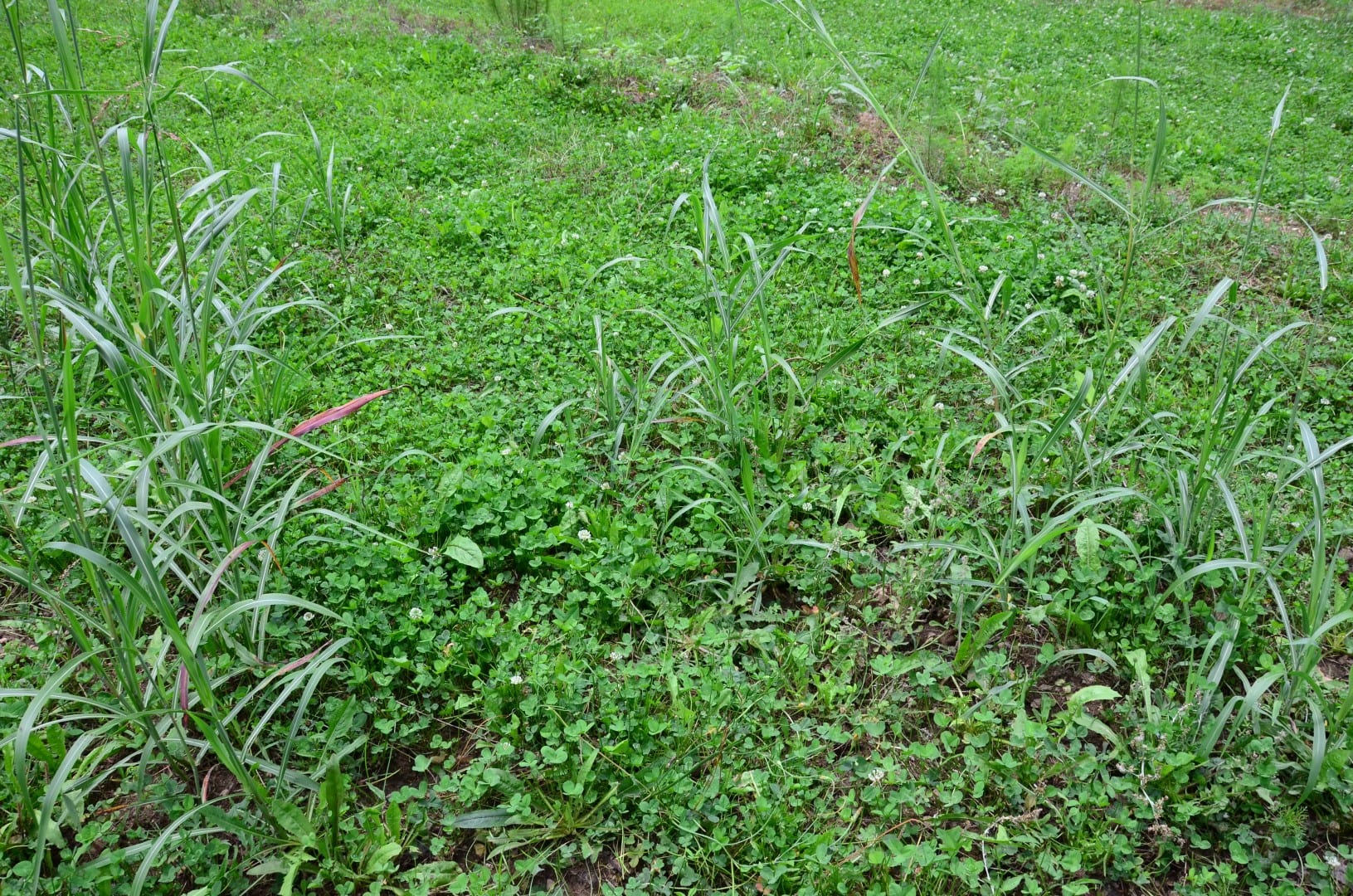
Clover plots are relatively inexpensive to plant and will last a number of years. But you will have to mow them to control weeds.
Final Thoughts
Food plots require a lot of hard work and when done properly can be quite expensive. The last thing you want is to watch your investment get choked out by a weed issue that could have been prevented. Fortunately, armed with a little knowledge and a game plan, you can keep weed issues at a minimum and grow a food plot you’ll be proud of. More importantly, your plot will provide quality forage for the deer and you a place to put an arrow through a mature buck.





